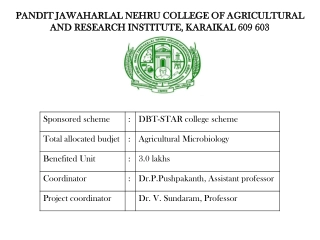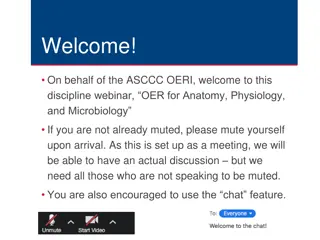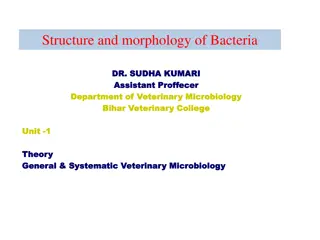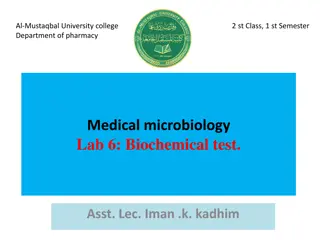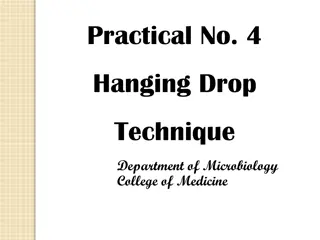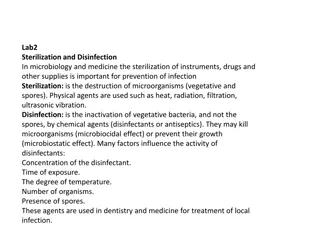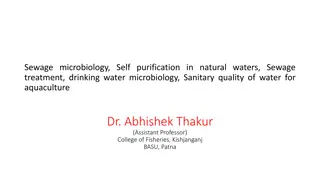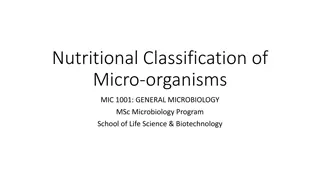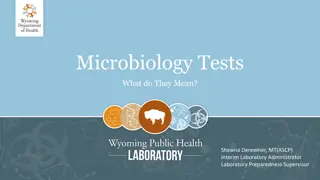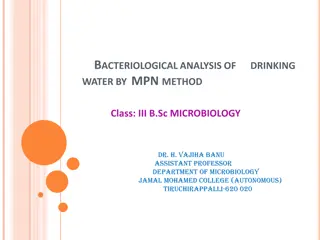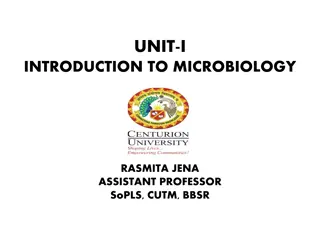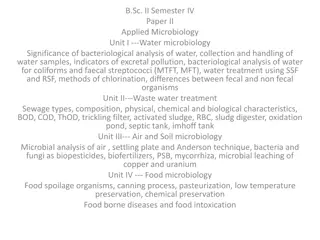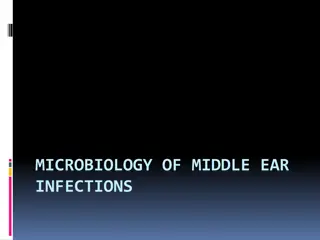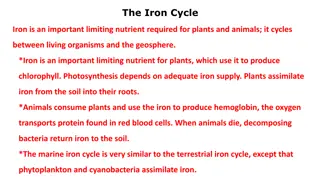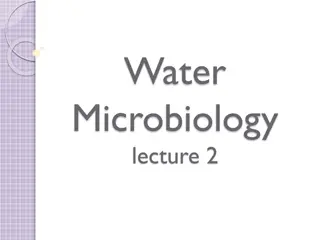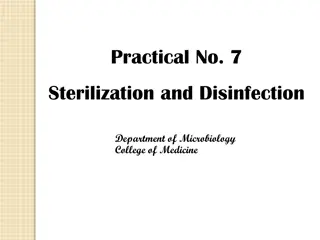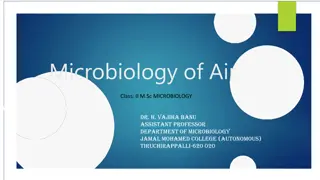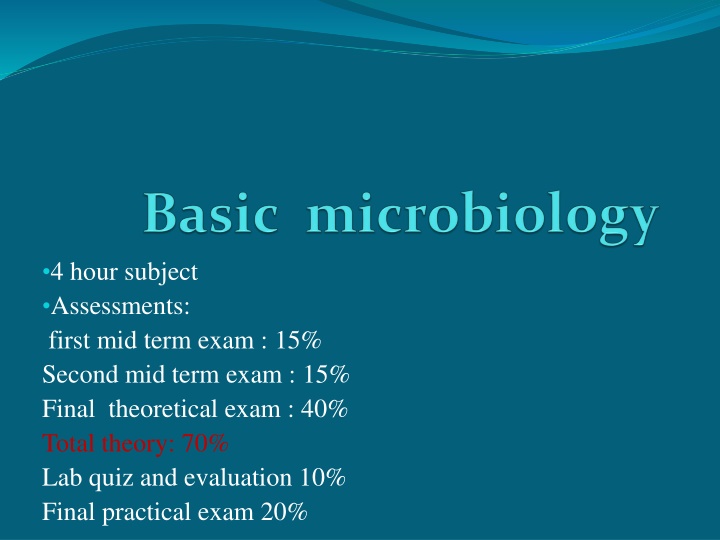
Understanding Microorganisms and Taxonomy in Biology
Explore the world of microorganisms and taxonomy in biology, covering topics such as the classification of living organisms, the role of beneficial and harmful microbes, and the importance of nomenclature in scientific naming. Learn about the different kingdoms, phyla, classes, and species in the biological world, and discover the fascinating relationships between humans and bacteria.
Download Presentation

Please find below an Image/Link to download the presentation.
The content on the website is provided AS IS for your information and personal use only. It may not be sold, licensed, or shared on other websites without obtaining consent from the author. If you encounter any issues during the download, it is possible that the publisher has removed the file from their server.
You are allowed to download the files provided on this website for personal or commercial use, subject to the condition that they are used lawfully. All files are the property of their respective owners.
The content on the website is provided AS IS for your information and personal use only. It may not be sold, licensed, or shared on other websites without obtaining consent from the author.
E N D
Presentation Transcript
4 hour subject Assessments: first mid term exam : 15% Second mid term exam : 15% Final theoretical exam : 40% Total theory: 70% Lab quiz and evaluation 10% Final practical exam 20%
Over view : Microorganism: is a small living organism found in every ecosystem and in close association with every type of multi-cellular organism. It lives within human body and participate in body function as bacteria in intestine, it is called Normal flora
Where as 3% of known microbes are harmful to human body: it is called pathogen.
Taxonomy which is the science of classification of living organisms According to Bergeys manual of systemic bacteriology consisted of separated areas : 1. classification 2.nomenclature 3.identification
Classification : arrangement of organisms into taxonomic (taxa) on the basis of similarities or relationships. The taxa include: 1. Kingdom or domains 2. Division or phyla 3. Classes 4. Order 5. Families 6. Genera 7. Species
There is 5 kingdom: Procaryotae------------Bacteria and archaeans. Protista---------------Algae and protozoea. Fungi------------------fungi Plantea---------------plantae Animalia------------- animals and human .
Viruses are not included because they are not living cell. Comparison of human and bacterial classification : Medically important bacteria Human being Animalia Kingdom : procaryotae Chordata Phylum : proteobacteria Mammalia Class : gamma proteobacteria Order : Enterbacteriales Primates Family : Enterbacteriaceae Hominidae Genus : Escherichia Homo Species : Escherichia coli Homo sapiens
Nomenclature : name the organisms according the international rules. The first name is genus and the second name is species. And it is written either underlined or italic. Quite often bacteria are named for the disease that they cause example: Bacillus anthrax-------------anthrax Streptococcus pneumonia------pneumonia Haemophilus influenzae-------influenzaedisease
MICROORGANISM IS CLASSIFIED INTO : CELLULAR ACELLULAR viruses Procaryotic Bacteria Eucaryotic Protozoa fungi
Cells in our world come in two basic types, prokaryotic and eukaryotic. "Karyose" comes from a Greek word which means "kernel," as in a kernel of grain. In biology, we use this word root to refer to the nucleus of a cell. "Pro" means "before," and "eu" means "true," or "good." So "Prokaryotic" means "before a nucleus," and "eukaryotic" means "possessing a true nucleus." This is a big hint about one of the differences between these two cell types. Prokaryotic cells have no nuclei, while eukaryotic cells do have true nuclei. This is far from the only difference between these two cell types
euokaryotic prokaryptic Biological distribution All animals and protozoa All bacteria Nuclear membrane Presents Absent presents Generally absents Membranous structures other than cell membrane 80s 70s Cytoplasmic ribosome's (density) present of complex chemical , containing peptidoglycan Cell wall absent Photosynthesis absent present
BACTERIA It is prokaryotic organisms that has been divided into two major groups: The eubacteria : that include all bacteria of medical importance . And the archae bacteria ; collection of the other bacteria
Scientist Anton van leeuwenhoek(1632-1723)(holland) Father of microbiology: he is the first one to see the live bacteria and protozoa by single lance microscope. He called the small living organism animalcules
1750-1760 Carolus Linnaeus classified all known plants and animals and set down rules for classification 1875-1900 The Golden Age of Microbiology
Louis paster: He is French chemist 1. He discover forms of life that can exist in the presence of oxygen called aerobes and anaerobes can exist with out oxygen. 2. Develop a process called pasteurization is heat liquid 55 c for several minutes pasteurization does not kill all microorganism. 3. He discover the infectious agent that affect silk industry in France 4. He made significant contribution to the germ theory of disease - specific microorganism cause specific infectious disease-. 5. He discover a vaccine for chicken cholera. 6. Develop vaccine for dog and human rabies.
Robert koch: Culture bacteria on a solid media. 2. He invent petridishes 3. He use the agar as solid media and isolate the organism in a pure culture. 4. He discover (mycobacterium tuberculosies) that cause tuberculosis and Invent skin test to diagnose the T.B. 5. He discover vibrio choleae 1.
By the end of this lecture you should know : Taxonomy of living microorganisms 2. Difference bet. Eu via pro karyoticcell and the meaning of it. 3. The achievements of the three scientist. 1.

